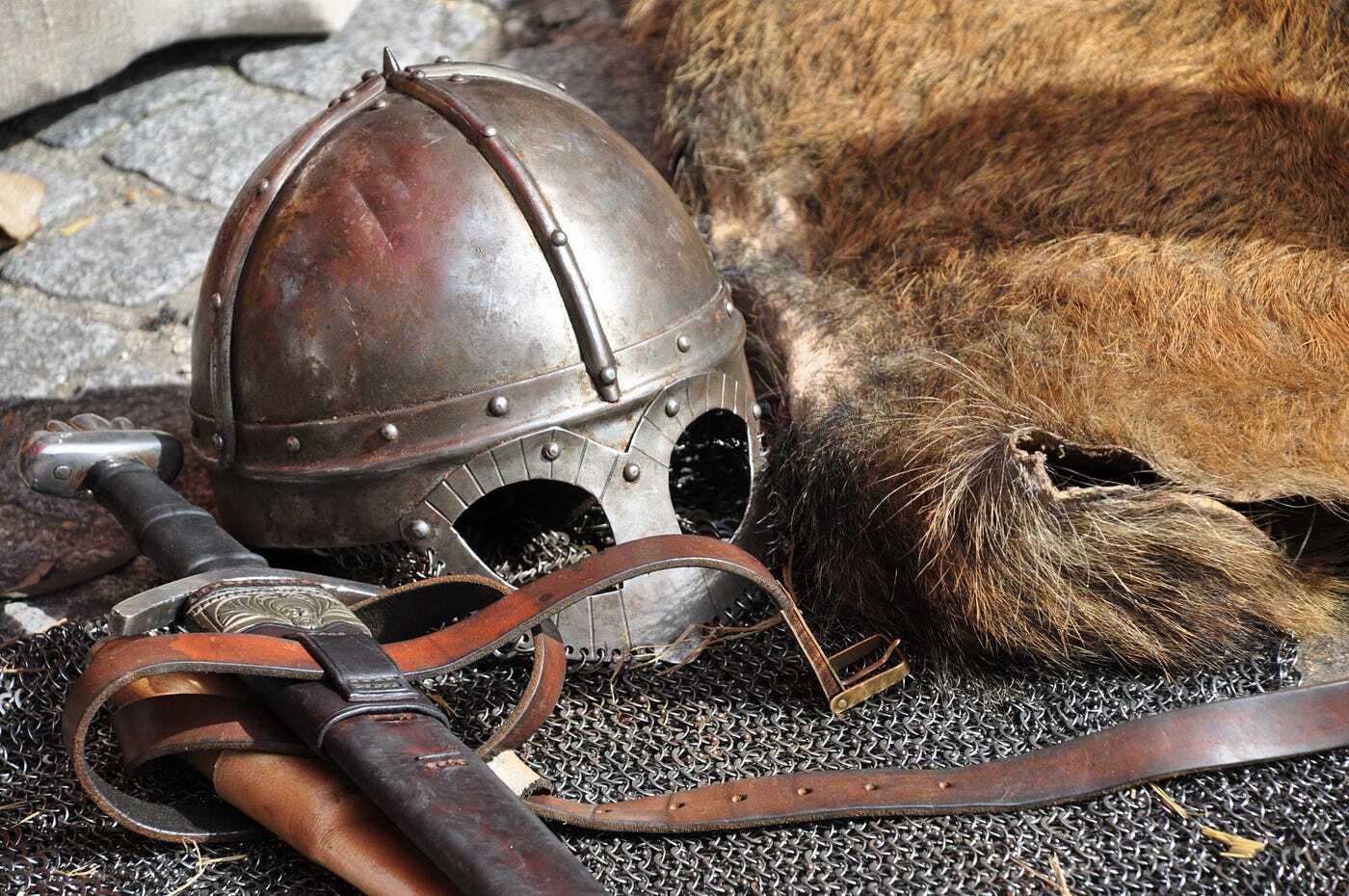
Medieval torture devices were instruments of pain and fear, designed to extract confessions or punish wrongdoers. These tools of torment ranged from the infamous Iron Maiden to the gruesome rack. Why did societies use such brutal methods? Power and control. Authorities believed that extreme pain would deter crime and maintain order. Some devices were so terrifying that their mere presence could force a confession. Others, like the thumbscrew, inflicted excruciating pain on specific body parts. This blog post delves into 35 chilling facts about these medieval instruments, shedding light on their history, purpose, and the dark ingenuity behind their creation.
Key Takeaways:
- Medieval torture devices were cruel and horrifying, designed to inflict maximum pain and suffering. They were used for punishment, extracting confessions, and as a deterrent in public spectacles.
- Some devices were tailored for specific crimes, while others were designed to break the victim's spirit. Torture was also used in warfare to extract information or punish enemies.
The Dark Ages and Torture
The medieval period, often called the Dark Ages, was notorious for its brutal methods of punishment. Torture devices were ingeniously cruel, designed to inflict maximum pain and suffering. Here are some chilling facts about these devices.
-
The Rack: This device stretched the victim's body, dislocating joints and causing excruciating pain. It was a favorite for extracting confessions.
-
The Iron Maiden: A coffin-like device lined with spikes. When closed, the spikes would pierce the victim's body without hitting vital organs, prolonging agony.
-
The Judas Cradle: Victims were lowered onto a pyramid-shaped seat, causing severe pain and injury to sensitive areas.
-
The Brazen Bull: A hollow brass bull where victims were roasted alive. Their screams would mimic the sound of a bull.
-
The Pear of Anguish: Inserted into the mouth, rectum, or vagina, this device expanded, tearing tissues and causing immense pain.
Torture for Public Spectacle
Public executions and torture were common, serving as both punishment and a deterrent. These events were often attended by large crowds.
-
The Breaking Wheel: Victims were tied to a wheel and bludgeoned, breaking bones. The wheel was then displayed with the body.
-
The Pillory: A wooden frame with holes for the head and hands. Victims were exposed to public humiliation and abuse.
-
The Scavenger's Daughter: Compressed the body into a painful crouching position, causing blood to pool in the head and chest.
-
The Spanish Donkey: Victims were made to sit on a sharp, V-shaped wedge, with weights added to their feet to increase pain.
-
The Heretic's Fork: A two-pronged fork placed between the chest and throat, preventing movement and causing pain with every breath.
Devices for Religious Persecution
During the Inquisition, many torture devices were used to extract confessions from accused heretics and witches.
-
The Strappado: Victims were hung by their wrists, often dislocating shoulders. Sometimes weights were added for extra pain.
-
The Thumbscrew: Crushed the thumbs or fingers, causing intense pain and often permanent damage.
-
The Witch's Chair: A chair lined with spikes. Victims were strapped in, causing pain and preventing sleep.
-
The Garrote: A device used for strangulation. A metal collar was tightened around the neck until the victim suffocated.
-
The Ducking Stool: Used to determine if someone was a witch. Victims were dunked into water; survival often meant guilt.
Ingenious Yet Cruel Inventions
Medieval torturers were disturbingly creative, inventing devices that were both effective and horrifying.
-
The Cat's Paw: A claw-like device used to rip flesh from the body.
-
The Lead Sprinkler: Filled with molten lead or boiling oil, it was used to drip hot liquid onto the victim's body.
-
The Knee Splitter: Designed to destroy the knees, this device had spikes that were driven into the joint.
-
The Head Crusher: Slowly crushed the skull, causing excruciating pain and often death.
-
The Coffin Torture: Victims were placed in a metal cage shaped like a human body and left to die from exposure.
Torture for Specific Crimes
Certain devices were tailored for specific crimes, ensuring the punishment fit the offense.
-
The Breast Ripper: Used on women accused of adultery or heresy, this device tore the breasts.
-
The Saw: Victims were hung upside down and sawed in half, ensuring they remained conscious for most of the ordeal.
-
The Crocodile Shears: Used to mutilate those who attempted to assassinate the king. It was designed to rip off fingers.
-
The Spanish Tickler: A claw-like device used to tear flesh from the bones.
-
The Iron Boot: Filled with boiling water or oil, it was used to torture the feet.
Psychological Torture
Not all medieval torture was physical. Some devices were designed to break the victim's spirit.
-
The Drunkard's Cloak: A barrel worn by those accused of public drunkenness, exposing them to ridicule.
-
The Shame Flute: A metal flute-like device locked around the neck and fingers of bad musicians, forcing them to wear it in public.
-
The Brank's Bridle: A metal mask with a gag, used to punish women accused of gossiping or speaking out.
-
The Heretic's Fork: A two-pronged fork placed between the chest and throat, preventing movement and causing pain with every breath.
-
The Scold's Bridle: A metal mask with a spiked bit, used to punish women accused of being too outspoken.
Torture in Warfare
Medieval warfare was brutal, and torture was often used to extract information or punish enemies.
-
The Boot: A device that crushed the foot and lower leg, causing excruciating pain.
-
The Thumbscrew: Crushed the thumbs or fingers, causing intense pain and often permanent damage.
-
The Water Torture: Victims were strapped down and had water poured over their faces, simulating drowning.
-
The Rat Torture: A cage with rats was placed on the victim's body. The cage was heated, forcing the rats to burrow into the flesh.
-
The Crocodile Tube: Victims were placed inside a tube with a crocodile, leading to a gruesome death.
The Dark Side of History
Medieval torture devices reveal a chilling glimpse into the past. These tools of pain and suffering were designed to extract confessions, punish wrongdoers, or instill fear. From the infamous Iron Maiden to the gruesome Judas Cradle, these devices show the lengths people went to enforce laws and maintain order.
Understanding these methods helps us appreciate the progress made in human rights and justice. It’s a stark reminder of how far society has come and the importance of continuing to protect those rights.
Learning about these devices isn't just morbid curiosity; it's a way to ensure history's darkest chapters aren't repeated. By remembering the past, we can strive for a more humane future. So, next time you think about medieval times, remember both the knights in shining armor and the shadows that lurked in their dungeons.
Frequently Asked Questions
Was this page helpful?
Our commitment to delivering trustworthy and engaging content is at the heart of what we do. Each fact on our site is contributed by real users like you, bringing a wealth of diverse insights and information. To ensure the highest standards of accuracy and reliability, our dedicated editors meticulously review each submission. This process guarantees that the facts we share are not only fascinating but also credible. Trust in our commitment to quality and authenticity as you explore and learn with us.


